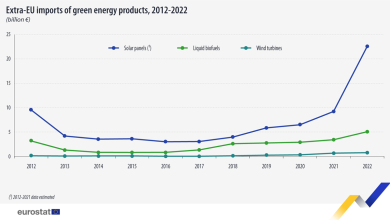An agreement that seems neither to scare nor to comfort anyone
The Russian and Saudi oil ministers signed in Doha, on February 16, together with the Qatari and Venezuelan counterparts, an agreement aimed to freeze the oil output at the January level. It’s not clear by now whether the signatories intended ‘serious business’ by signing the agreement, or it was just an act intended to show the great players on the oil market want to start doing something. Anyway, the first signal sent was that Saudi Arabia is finally considering taking action in the issue of international oil prices by putting an end to the process of increasing its output. On the other side, Russia’s hope to see higher prices on the market, in order to balance its budget and cash deficits, could not be met without a helping hand from the Middle East, mainly from Saudi Arabia.
However, their plan seems to be impaired. Not even the oil markets were very impressed, the price per barrel floated in normal margins for February. And that’s because the deal starts from the premises that both Russia and Saudi Arabia had the highest output in January, the reference for the agreement. Russia produced a post-Soviet record of 10.88 million barrels per day, while Saudi Arabia’s production was near the record high level of 10.2 million barrels. It seems the trick was to make the other oil producers cut down their output, while the two large oil producers freeze their output at the highest level. Some would say it was a nice try.
Nevertheless, most international analysts say the deal would not hold too long, being inconsistent and lacking world vision. More than that some claim there are a lot of reasons for not reaching the target of higher oil prices.
One reason is related to the questions about the OPEC members’ production, as some report different production quotas than the actual ones. Furthermore, it’s not just the OPEC countries that cheat. Analysts also point to Russia, which tends to act in the same way, taking as example what happened in 2001. Back then, when the last OPEC and non-OPEC agreement was tabled, Saudi Arabia persuaded Mexico, Norway and Russia to contribute to production cuts. But Moscow never followed through and raised exports instead.
Another reason would be related to Iran; shortly after the lifting of international sanctions it planned to increase the output by at least 500,000 barrels a day this year. But the deal signed on February 16 provides that Iraq and Iran should not increase production above the 3.25-3.5 million barrels per day, which the Iranian oil minister called as ridiculous. Tehran is aiming at increasing its production by some one million barrels in the next years. Most certainly it would not give up its plans just to align to the above mentioned agreement. On the contrary, it would add pressure on the supply. Let’s not forget Saudi Arabia is not quite the ‘friend’ of Iran, following the events in January. “Asking Iran to freeze its oil production level is illogical… when Iran was under sanctions, some countries raised their output and they caused the drop in oil prices… how can they expect Iran to cooperate now and pay the price?” said Mehdi Asali, General Director of OPEC Affairs and Ministry of Petroleum Energy Assemblies.
Another reason is connected to the US, already the number one oil producer in the world and to the shale oil output. In order to keep the price up, oil exporting countries would have to cut production further, analysts say. But the oil output in North America is not falling as expected by the Saudis. Quoting a US analyst, we could say that the production in the Gulf of Mexico should hit 1.84 million barrels in Q1 2017, meaning a 16% increase y.o.y. Having in view the closing down of some shale oil exploitations in the US and other developments, the impact on the oil output would be reduced, from 9.43 million barrels per day in 2015 to 8.7 million barrels per day in 2016 and to 8.4 million barrels per day in 2017 – meaning only one million barrel per day. Furthermore, it seems Canadian oil will hit the US market in 2016, as the Canadian market is full. It is said that exports to the US will increase this year from 3.9 million barrels per day in January to 4.1 million barrels per day in December, meaning some 800,000 barrels per day from Canada to the US.
In this context, there comes again the question: where is the oil price heading to?
Most analysts take into consideration the threats against oil companies. A recent report shows large banks are getting more exposed to the risks related to oil price. Hence, JPMorgan’s real exposure to oil and gas is some USD 44 billion, with almost 40% coming from the highly endangered exploration and production companies and 19% from the oil service companies. In addition, Wells Fargo has a USD 42 billion exposure to the sector, with 45% being exploration and production and 20% oil field services.
To this situation we could add that, according to a Deloitte survey, that a third of world oil producers risk going bankrupt in 2016, due to the low level of price, meaning 175 companies having debts of over USD 150 billion.
Will the oil prices go up or down? Will they remain at the current levels?
From the individual consumer the news may be good, but for the large players on the oil market it’s not so.
Two recent surveys say the oil price will remain low. Vitol Group says the oil price may remain low on long term, probably ten years – due to China’s economy slowdown and to the shale oil output in the US. The anticipated price range: USD 40-60 per barrel. The second survey comes from the International Energy Agency (IEA) which says on short term a price rise for crude oil is improbable, as the excess oil will dominate the market the next year as well. IEA anticipates Iran will take Iraq’s place in terms of output increase and that in 2017 a balance between supply and demand is possible, however the huge stocks accumulated will soften the pace of recovery in the oil price. The agency admits that earlier anticipations regarding the oil price were far from reality.
Let’s note that the IEA report came after the agreement signed in Doha, showing that very few have taken seriously the output freezing agenda. It seems that, for most of those involved on the oil market, one way or another, the agreement does not scare, nor does it comfort anyone.







